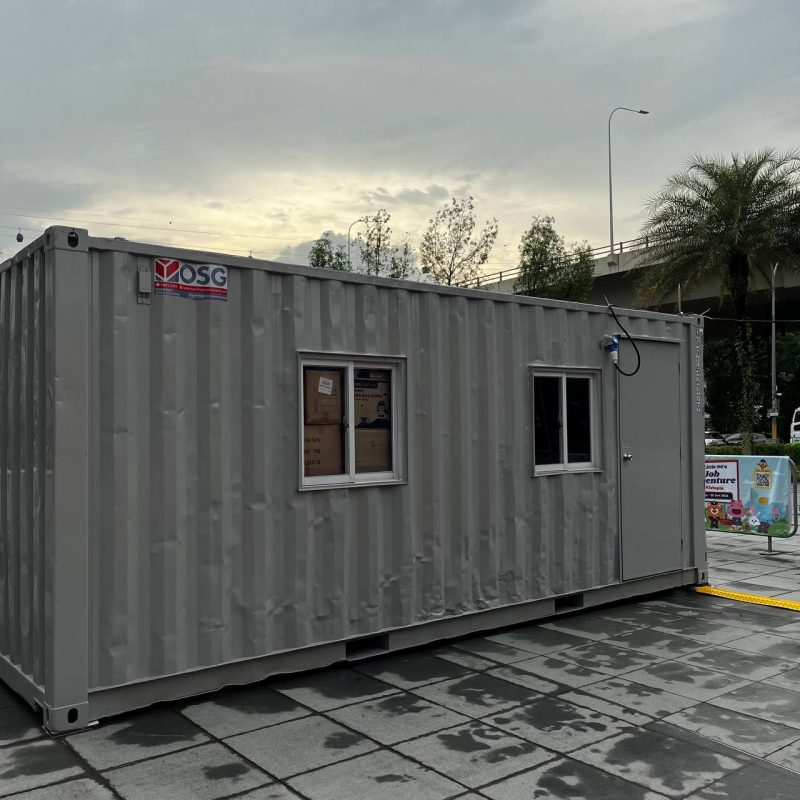From Cargo to Chic: How Shipping Containers Are Redefining Retail Spaces

In the ever-evolving world of retail, innovation isn’t just a buzzword—it’s a necessity. As traditional brick-and-mortar stores grapple with shifting consumer behaviors and rising costs, an unexpected hero has emerged in the form of shipping containers. Once relegated to the cargo hold of freighters and ports, these utilitarian boxes are now being transformed into chic, functional retail spaces. The rise of container-based retail is not just a trend but a testament to how creativity and practicality can converge to redefine the shopping experience.
A Fresh Perspective on Space Utilization
Shipping containers offer a fresh perspective on space utilization. Standardized, modular, and surprisingly versatile, these containers provide an innovative solution to the constraints of traditional retail environments. Retailers can now set up shop in unconventional locations, from urban rooftops to remote rural areas, expanding their reach and accessibility.
The inherent modularity of shipping containers allows for flexibility in design. Retailers can arrange multiple containers to create a larger retail space or use a single container for a pop-up shop. This adaptability makes containers ideal for temporary installations, seasonal markets, and even experimental retail concepts. The ability to easily transport and reconfigure containers further enhances their appeal for dynamic retail strategies.
Cost-Efficiency and Sustainability
One of the most compelling reasons retailers are turning to shipping containers is cost-efficiency. The cost of acquiring and retrofitting a shipping container is often significantly lower than traditional construction methods. For startups and small businesses, this affordability can be a game-changer, providing an entry point into the retail market without the burden of hefty overhead costs.
Beyond financial benefits, shipping containers align with growing sustainability trends. Repurposing these containers not only reduces waste but also promotes the recycling of materials. Many retailers incorporate eco-friendly practices into their container setups, such as installing solar panels, using energy-efficient lighting, and incorporating sustainable materials in the interior design. This commitment to sustainability resonates with environmentally conscious consumers and enhances the brand’s image.
Creating Unique and Engaging Spaces
The transformation of shipping containers into retail spaces often results in strikingly unique and engaging environments. The raw, industrial aesthetic of containers contrasts beautifully with modern design elements, creating a visually compelling shopping experience. Interior designers are taking advantage of the container’s inherent structure to craft innovative layouts that maximize space and functionality.
For instance, the container’s corrugated steel exterior can be juxtaposed with warm, inviting interior finishes, creating a dynamic contrast that draws customers in. Creative branding and signage can be applied to the exterior, turning the container into a recognizable landmark. Retailers are also experimenting with container configurations to create interactive and immersive shopping environments that stand out in a crowded marketplace.
Case Studies and Success Stories
Several high-profile examples highlight the success of container-based retail spaces. One notable case is the “Container Park” in Las Vegas, a vibrant shopping and entertainment complex built from refurbished shipping containers. This project has become a popular destination, showcasing how containers can be used to create a thriving retail hub.
Another example is “Boxpark” in London, a temporary shopping destination constructed from shipping containers that has gained significant popularity. The concept’s success has led to the establishment of additional locations, demonstrating the scalability and appeal of container-based retail.
Challenges and Considerations
Despite their many advantages, shipping containers are not without challenges. Proper insulation and ventilation are crucial to ensure a comfortable shopping environment, particularly in extreme weather conditions. Additionally, retailers must navigate zoning regulations and building codes, which can vary depending on location.
Moreover, while containers offer a cost-effective solution, the initial setup and customization can still be a significant investment. Retailers must carefully plan their container design to ensure it meets their functional needs and aligns with their brand identity.
The Future of Retail Spaces
As retail continues to evolve, shipping containers represent a promising frontier. Their versatility, cost-efficiency, and sustainability align with modern consumer expectations and retail trends. The ability to create unique, engaging, and flexible retail environments makes shipping containers a compelling choice for forward-thinking retailers.
In a landscape where innovation is key, shipping containers are proving that even the most utilitarian of objects can be reimagined into something truly remarkable. As more retailers embrace this trend, we can expect to see even more creative and inspiring uses for these once-humble cargo carriers, further redefining the future of retail spaces.

